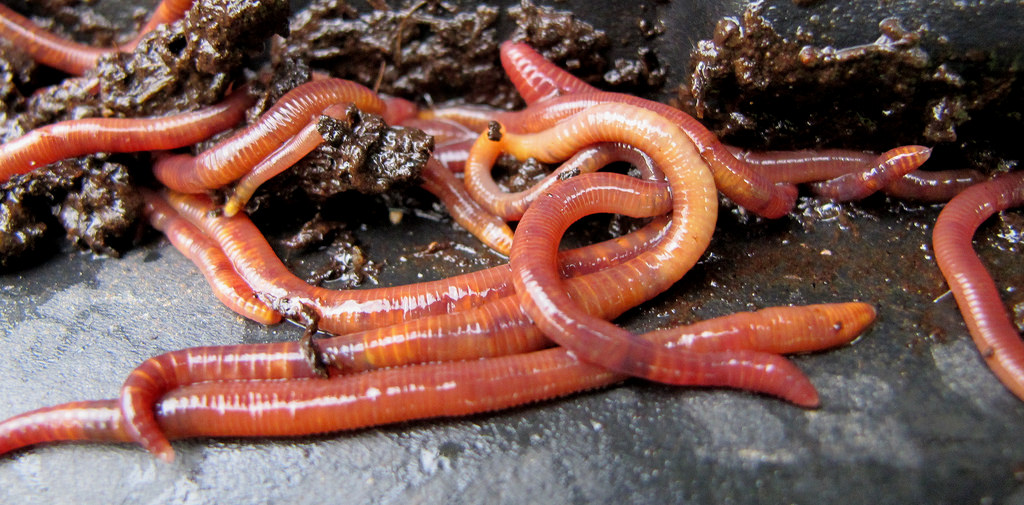Red Wigglers: The Unsung Heroes of Organic Waste Recycling
Red wigglers, or Eisenia fetida, serve as critical representatives in the natural waste recycling process, transforming thrown out materials into important vermicompost. Their effective break down of raw material not just boosts dirt high quality however also contributes to lasting waste management practices. As the world increasingly seeks solutions to battle waste build-up and enhance agricultural productivity, comprehending the duty of these worms becomes vital. What devices enable them to thrive in compost environments, and how can they be efficiently made use of in both household and business setups? Discovering these concerns discloses the wider effects of vermicomposting in our environmental landscape.
What Are Red Wigglers?
The impressive durability of red wigglers, scientifically understood as Eisenia fetida, underscores their critical function in natural waste recycling. These tiny, reddish-brown earthworms are commonly discovered in decomposing raw material, such as compost stacks and manure heaps. Lake Hickory Bait. Unlike other earthworm varieties, red wigglers prosper in nutrient-rich environments and are extremely reliable at breaking down natural materials, making them crucial for vermicomposting

(Red Wiggler Express)Along with their function in waste decrease, red wigglers add to dirt health by improving soil structure and aeration via their tunneling tasks (Lake Hickory Bait). Their visibility in composting systems not just improves decomposition rates however additionally advertises a lasting strategy to squander administration, showing their value in eco-friendly conservation efforts
Benefits of Composting With Worms
Composting with worms, particularly red wigglers, provides countless advantages that improve both waste monitoring and dirt wellness. These worms effectively break down organic waste, converting it into nutrient-rich vermicompost that enriches dirt. This procedure accelerates decomposition, permitting a much faster recycling of cooking area scraps and various other natural materials compared to traditional composting methods.
Additionally, the vermicompost created by red wigglers is teeming with useful microbes, which help enhance soil framework, oygenation, and wetness retention. This improves the general wellness of plants, advertising vigorous development and enhanced yields in gardens and farming settings. The usage of worms in composting minimizes the production of greenhouse gases, such as methane, adding to a much more lasting waste monitoring system.

How to Start Vermicomposting
Developing a vermicomposting system is a straightforward procedure that can produce substantial advantages for both waste monitoring and soil enrichment. To begin, choose an appropriate container, such as a plastic container or wood box, with adequate ventilation holes to guarantee appropriate air flow. The dimensions useful link need to preferably be around 2 feet by 3 feet, allowing adequate space for the worms to grow.
Next, prepare bed linens product, which can include shredded newspaper, cardboard, or coconut coir. This bedding should be dampened to produce a suitable habitat for the worms. Once the bedding is in place, introduce red wigglers (Eisenia fetida) into the container, usually around one pound of worms for every square foot of area.
Complying with the placement of worms, add natural waste, such as vegetables and fruit scraps, coffee premises, and smashed eggshells. Prevent adding dairy products, meat, or oils, as these can develop odors and attract pests. Position the bin in a shaded, temperature-controlled area to maintain optimal conditions for worm activity. With these actions, you will properly launch a vermicomposting system that adds to sustainable waste management and enriches your dirt.
Preserving a Healthy And Balanced Worm Bin
(Lake Rhodhiss Bait)Maintaining a worm bin prospering needs routine focus and like ensure the health and wellness of the red wigglers and the efficiency of the composting process. Proper upkeep starts with keeping an eye on the moisture levels; the bin ought to perspire yet not waterlogged. A great regulation of thumb is to keep a consistency similar to a wrung-out sponge.
Oygenation is essential too. Delicately mixing the bed linen and food scraps every couple of weeks prevents compaction and ensures that all worms have access to oxygen. Furthermore, it is very important to feed the worms properly. A well balanced diet of fruit and vegetable scraps, coffee grounds, and smashed eggshells need to be offered in moderation to stay clear of overfeeding, which can result in odors and bugs.
Temperature level regulation is one more vital element. Red wigglers prosper in a series of 55 to 77 levels Fahrenheit. If the container comes to be also warm or cold, the worms may end up being stressed out - Lake Hickory Bait. Finally, occasionally examine for indicators of health, such as worm population development and the visibility of healthy and balanced spreadings. By vigilantly taking care of these factors, one can maintain a durable and effective worm container.
Effect On Lasting Living
The successful maintenance of a worm container not only profits the health and wellness of red wigglers but additionally adds substantially to sustainable living methods. By recycling natural waste, such as kitchen area scraps and yard particles, red wigglers help divert considerable amounts of material from landfills. This reduction in waste not just lowers greenhouse gas exhausts but additionally minimizes the ecological problem related to waste management.
Additionally, the castings produced by red wigglers offer as a nutrient-rich organic plant food, improving dirt wellness and promoting plant development. This natural choice to chemical fertilizers sustains lasting agriculture and gardening practices, reducing dependence on synthetic inputs that can damage environments. Additionally, worm composting promotes awareness of waste administration, encouraging individuals and areas to embrace even more sustainable behaviors.

Verdict
In recap, red wigglers serve as crucial factors to natural waste reusing with their effective decay of natural materials. By integrating vermicomposting right into waste administration techniques, individuals and areas can dramatically reduce waste while promoting ecological sustainability.